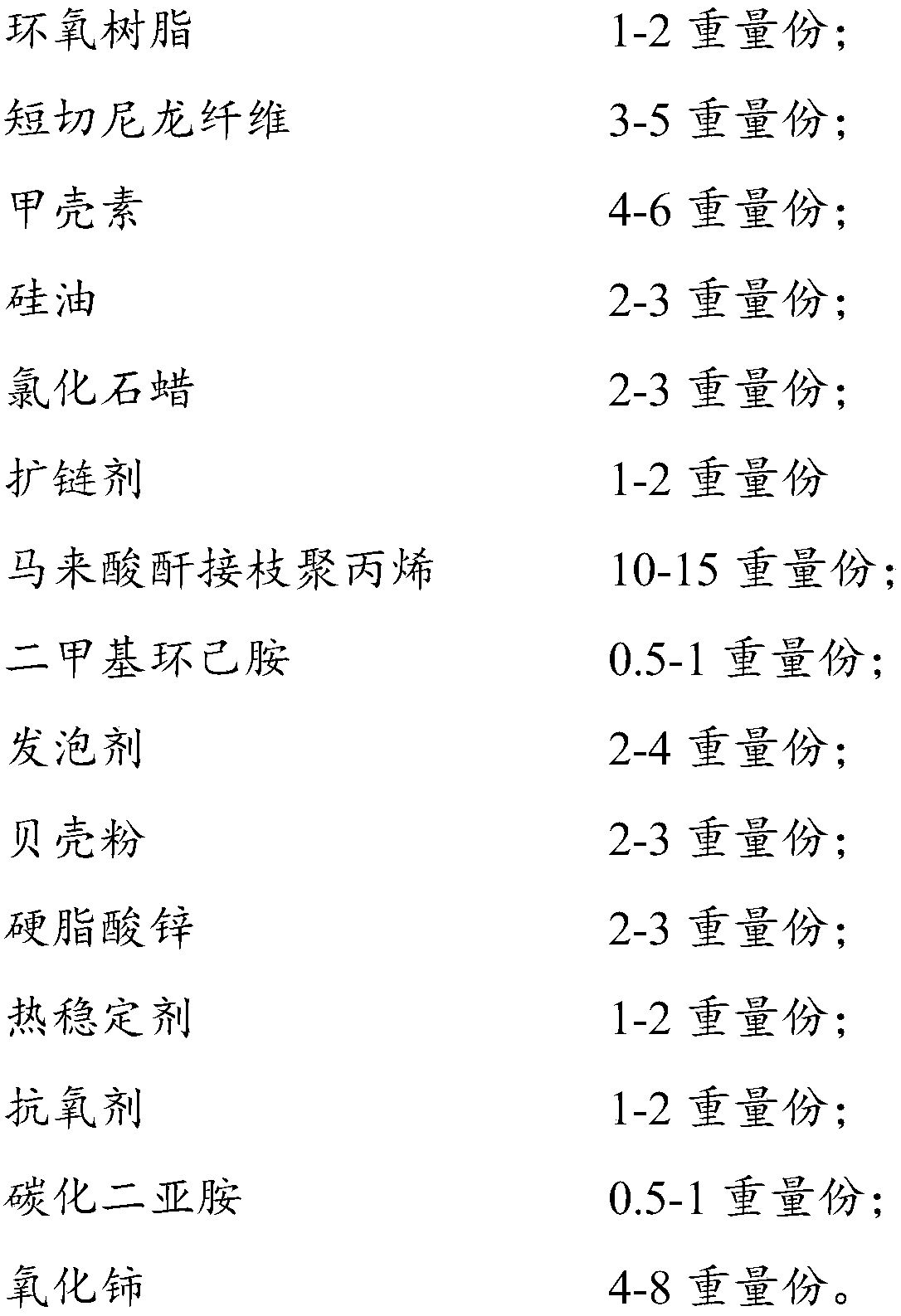Optical polishing material
A polishing material and optical technology, applied in the field of polishing materials, can solve the problems of polyurethane polishing pads such as hard, brittle, lack of toughness and elasticity, etc., and achieve the effect of not easy passivation, good wear resistance, and no deformation on the surface
- Summary
- Abstract
- Description
- Claims
- Application Information
AI Technical Summary
Problems solved by technology
Method used
Image
Examples
Embodiment 1
[0029] The optical polishing material is composed of 100 parts by weight of polyether polyol, 100 parts by weight of diisocyanate, 1 part by weight of bisphenol A type epoxy resin, 3 parts by weight of chopped nylon fiber (4mm), 4 parts by weight of chitin, and 2 parts by weight of silicone oil 2 parts by weight of chlorinated paraffin, 1 part by weight of ethylene glycol, 10 parts by weight of maleic anhydride grafted polypropylene, 0.5 parts by weight of dimethylcyclohexylamine, 2 parts by weight of acetone, 2 parts by weight of shell powder (50 μm) , 2 parts by weight of zinc stearate, 1 part by weight of tris(2,4-di-tert-butylphenyl) phosphite, 10101 parts by weight of antioxidant, 0.5 parts by weight of carbodiimide and cerium oxide (80 μm) 8 parts by weight.
Embodiment 2
[0031] Optical polishing material is made of 100 parts by weight of polyether polyol, 100 parts by weight of diisocyanate, 1.5 parts by weight of bisphenol A epoxy resin, 4 parts by weight of chopped nylon fiber (4mm), 5 parts by weight of chitin, and 2.5 parts by weight of silicone oil 2.5 parts by weight of chlorinated paraffin, 1.5 parts by weight of ethylene glycol, 12 parts by weight of maleic anhydride grafted polypropylene, 0.8 parts by weight of dimethylcyclohexylamine, 3 parts by weight of acetone, 2.5 parts by weight of shell powder (50 μm) , 2.5 parts by weight of zinc stearate, 1.5 parts by weight of tris(2,4-di-tert-butylphenyl) phosphite, 10101.5 parts by weight of antioxidant, 0.8 parts by weight of carbodiimide and cerium oxide (100 μm) 6 parts by weight.
Embodiment 3
[0033] The optical polishing material is composed of 100 parts by weight of polyether polyol, 100 parts by weight of diisocyanate, 2 parts by weight of bisphenol A epoxy resin, 5 parts by weight of chopped nylon fiber (4mm), 6 parts by weight of chitin, and 3 parts by weight of silicone oil 3 parts by weight of chlorinated paraffin, 2 parts by weight of ethylene glycol, 15 parts by weight of maleic anhydride grafted polypropylene, 1 part by weight of dimethylcyclohexylamine, 4 parts by weight of acetone, 3 parts by weight of shell powder (50 μm) , 3 parts by weight of zinc stearate, 2 parts by weight of tris(2,4-di-tert-butylphenyl) phosphite, 2 parts by weight of antioxidant 1010, 1 part by weight of carbodiimide and cerium oxide (120 μm) 8 parts by weight.
PUM
| Property | Measurement | Unit |
|---|---|---|
| length | aaaaa | aaaaa |
| particle diameter | aaaaa | aaaaa |
Abstract
Description
Claims
Application Information
 Login to View More
Login to View More - R&D
- Intellectual Property
- Life Sciences
- Materials
- Tech Scout
- Unparalleled Data Quality
- Higher Quality Content
- 60% Fewer Hallucinations
Browse by: Latest US Patents, China's latest patents, Technical Efficacy Thesaurus, Application Domain, Technology Topic, Popular Technical Reports.
© 2025 PatSnap. All rights reserved.Legal|Privacy policy|Modern Slavery Act Transparency Statement|Sitemap|About US| Contact US: help@patsnap.com



